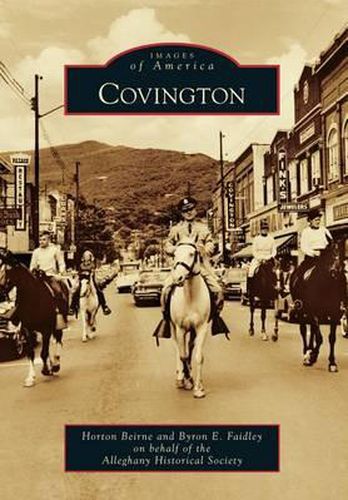Readings Newsletter
Become a Readings Member to make your shopping experience even easier.
Sign in or sign up for free!
You’re not far away from qualifying for FREE standard shipping within Australia
You’ve qualified for FREE standard shipping within Australia
The cart is loading…






Covington grew from one of Col. George Washington’s frontier forts, known as Fort Young, and due to the location of several early structures was known as Mouth of the Dunlap in the 1700s. Located on the Midland Trail and the proposed route for the Chesapeake & Ohio Railway, Covington was able to expand. The Civil War temporarily halted this progress and sent many of Covington’s native sons to fight on both sides during the conflict. After the war, the growing iron industry revived the community. In 1899, the West Virginia Pulp and Paper Company located a mill at the confluence of the Jackson River and Dunlap Creek, which continues to support the city of Covington today. The dawn of the 20th century found Covington booming and expanding so much that two new railway passenger stations had to be built within an 18-year period.
$9.00 standard shipping within Australia
FREE standard shipping within Australia for orders over $100.00
Express & International shipping calculated at checkout
Covington grew from one of Col. George Washington’s frontier forts, known as Fort Young, and due to the location of several early structures was known as Mouth of the Dunlap in the 1700s. Located on the Midland Trail and the proposed route for the Chesapeake & Ohio Railway, Covington was able to expand. The Civil War temporarily halted this progress and sent many of Covington’s native sons to fight on both sides during the conflict. After the war, the growing iron industry revived the community. In 1899, the West Virginia Pulp and Paper Company located a mill at the confluence of the Jackson River and Dunlap Creek, which continues to support the city of Covington today. The dawn of the 20th century found Covington booming and expanding so much that two new railway passenger stations had to be built within an 18-year period.